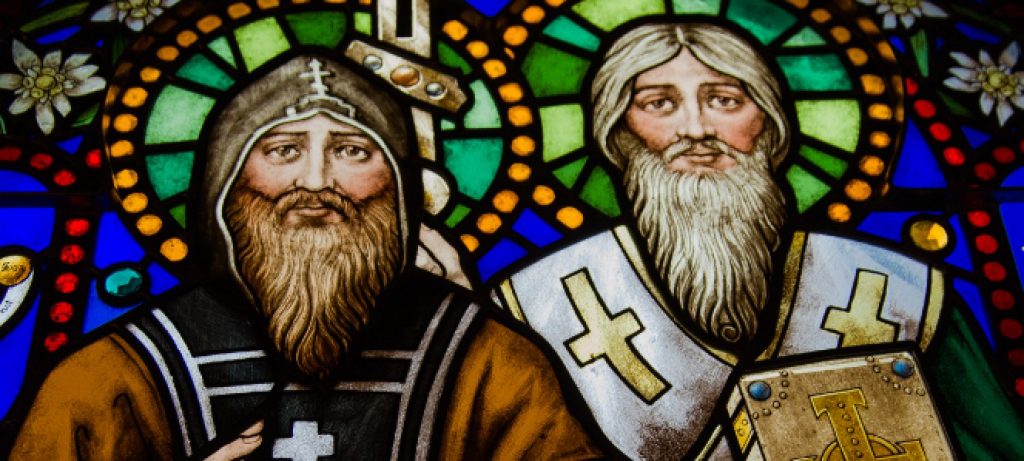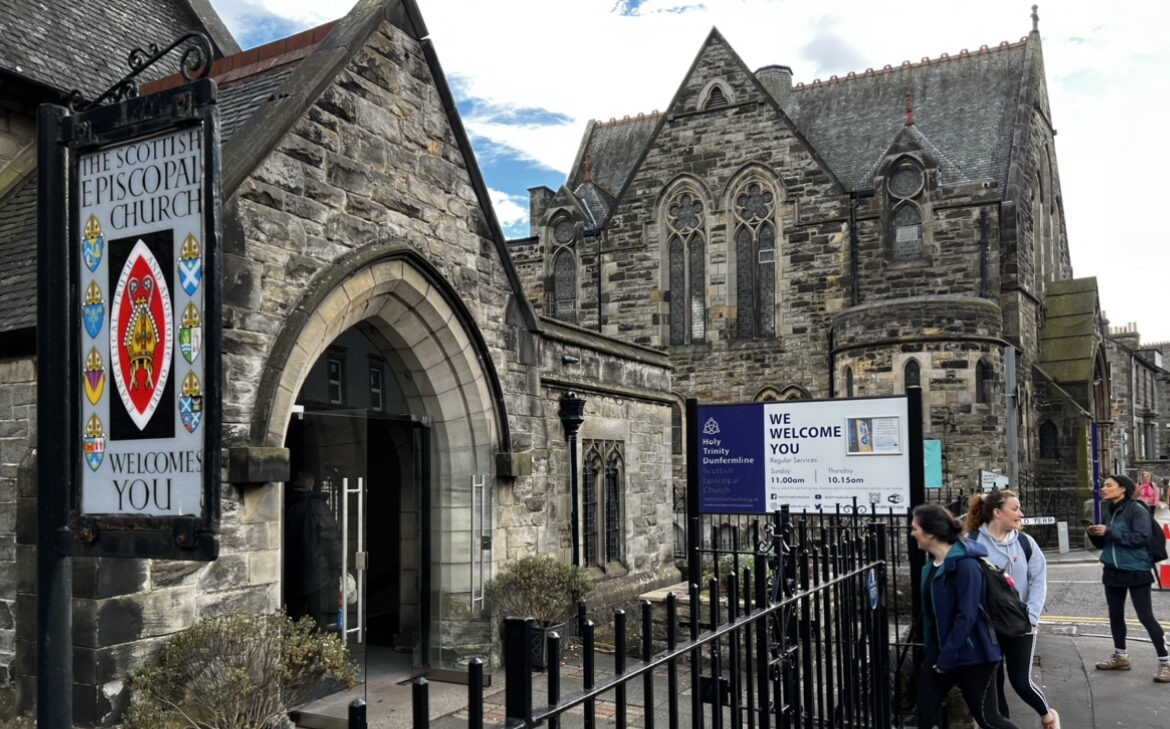Saints of the Month 14 February – Saints Cyril and Methodius
Up to now the saints I have written about have generally been either from the bible, or from the early western church of either the Roman or Celtic traditions. The eastern church under the Patriarch of Constantinople also had its saints spreading Christianity and it is worth realising how much Christianity developed in the Greek tradition in eastern Europe. This month I have selected two saints from the Byzantine Church as the subject and you will get two saints for the price of one because their lives and work are so intermingled that it is too difficult to write about one without mentioning the other.

Cyril and Methodius were brothers who were born in Thessalonica about 826AD (Cyril) and 815AD (Methodius) and were given the baptismal names Constantine and Michael respectively, the names Cyril and Methodius being adopted by them on their becoming monks (Cyril in Rome shortly before his death in 869 and Methodius at a Byzantine monastery in what is now North West Turkey.
When Cyril was 14 their father Leo died and the two boys came under the influence of Theoktistoe, am important minister in the Byzantine government. Theoktistoe introduced a far sighted education programme in the empire which benefited the two brothers and which included the foundation of a University at Magnaura where Cyril completed his education and then taught having been priested while his brother was a deacon before he too was priested six years later.
During their studies the two brothers spent time in translating the bible into the Slav language and had completed the New Testament and the Book of Psalms when their work was interrupted by a mission given to them by the Emperor and the Patriarch of Constantinople to go to the area of what is now the Crimea to convert it to Christianity. On this mission the two brothers taught and held services in the local language at which Cyril had become fluent. The brothers then returned to Constantinople and resumed their studies.
To follow their story it is necessary to know something of the politics and religious position at that time. A large swathe of land stretching from the Adriatic Sea across the south part of what is now the Ukraine, Bulgaria and Greater Moravia were inhabited by Slavonic peoples. The North of Italy, South East France, Southern Germany and parts of what is now Hungary was a land of the Franks ruled by a Christian King, Frederick the German. The latter was keen to extend his interest into the Slavonic lands to the East and Frankish Missionaries who taught in Latin had already introduced Christianity to the Slavs but on a very sporadic basis. The importance of Rome had been diminished with the translation of the seat of the Emperor to Constantinople and although the Pope was still the head of the Christian Church and the Great Schism between the Eastern and Western Churches was not to occur until the 11th Century there were tensions between the Popes and the Patriarchs of Constantinople one of which was the use of languages other than Latin for services.
In 862 the ruler of Great Moravia, fearing that the Franks were intent on taking over his land by stealthy use of missionaries and the encouragement of Latin, asked the Emperor Michael III and the Patriarch of Constantinople to send Slavonic speaking missionaries to his country and Cyril and his brother were despatched. Their mission was very successful mainly because of their use of Slavonic for teaching and services and the local Glagolitic Alphabet as revised by the two brothers, but its very success increased the tension with the Frankish Missionaries working in the same area. The two brothers realised that they needed the backing of the Pope to continue to use the Slavonic tongue.
In 867 the two brothers were summoned to Rome by Pope Nicholas I presumably to forbid the use of the Slavonic tongue for services following a complaint from the Archbishop of Salzburg who claimed jurisdiction over the area where they were operating. The two brothers arrived in Rome in 868 with some ceremony as they brought with them the relics of Saint Clement, They were warmly received by Pope Adrian II who had succeeded Pope Nicholas and were formally given authority to practice in the Slavonic language. Saint Methodius was installed as an Archbishop having been ordained by the Pope. Cyril whose health was failing became a monk and died in Rome just fifty days later on 14th February 869.
Methodius returned to Panonia and Great Moravia to continue his work but all was not to go smoothly for him for at a synod convened by the Frankish King Louis he was charged with usurping the powers of an Archbishop and was imprisoned in Germany for two and a half years. This was not accepted by the Pope who had him reinstated but he was forbidden to use the Slavonic Liturgy, which it seems he disregarded. He died in Moravia on 6th April 885.
After his death the controversy over the use of Slavonic services continued. Pope Stephen V banned the use of the Slav Liturgy and it was no longer used in Roman Churches. Methodius’ disciples were exiled from Moravia and went to Bulgaria where they were welcomed. The disciples continued the work of the brothers in updating the Glagolitic alphabet and when it was completed it became the Cyrilic Alphabet named after St. Cyril which is now used widely in most east European Countries including of course Russia.
Cyril and Methodius were canonised as saints by popular acclaim in the Eastern Church where they have been formally recognised as Apostles to the Slavs with a status “equal to apostles”. In 1880 Pope Leo XIII added them to the Roman Catholic Calendar of Saints with a feast day of 14 February (also St Valentine’s Day).
In 1980 Pope John Paul II declared them to be co-patron saints of Europe along with St Benedict. Perhaps we should be seeking their help over Brexit.

